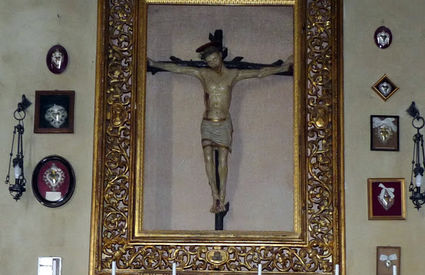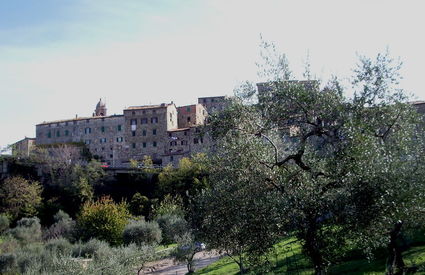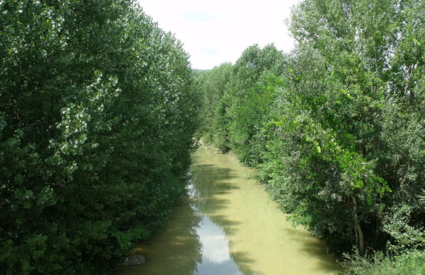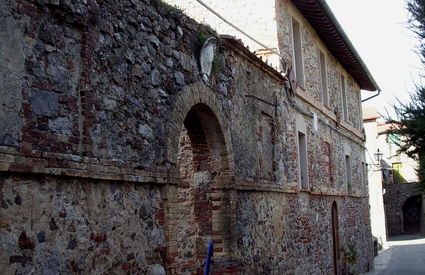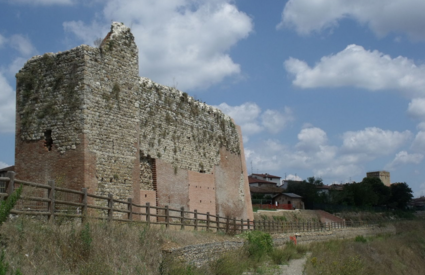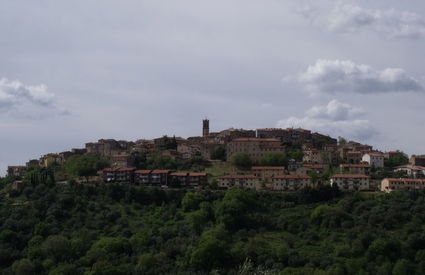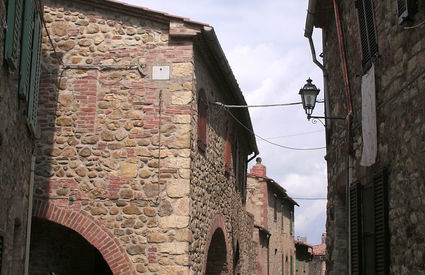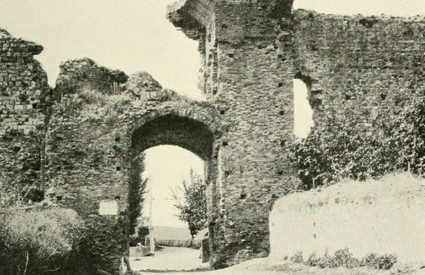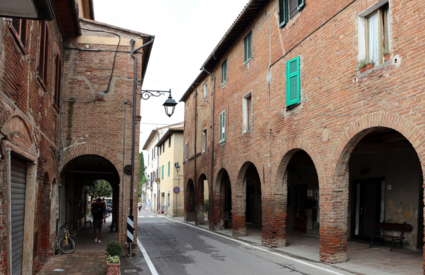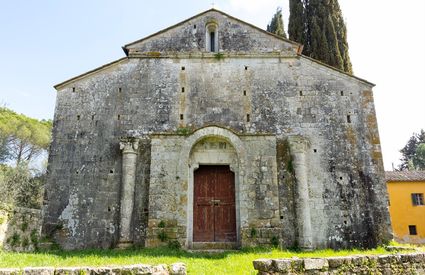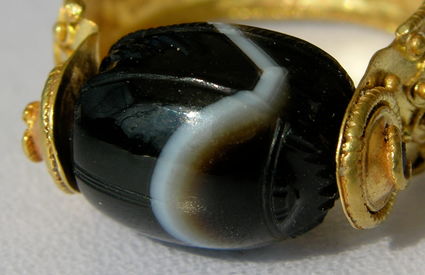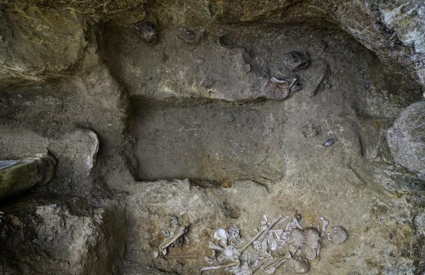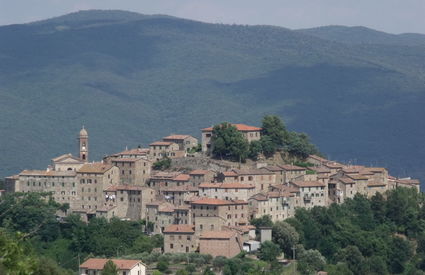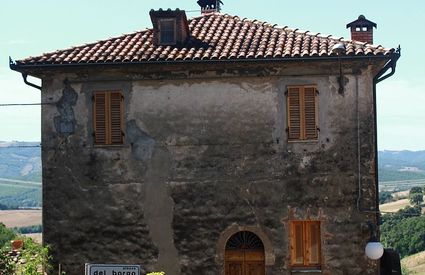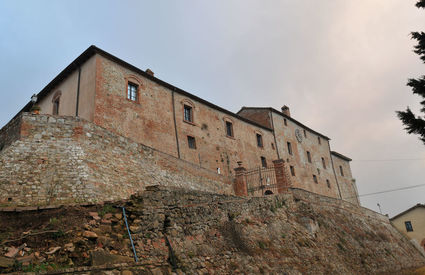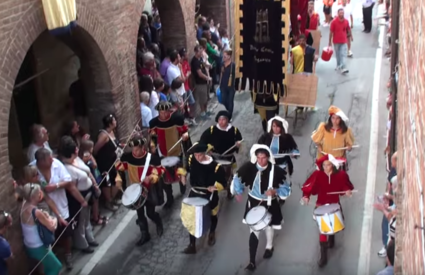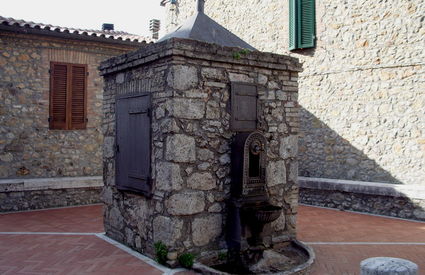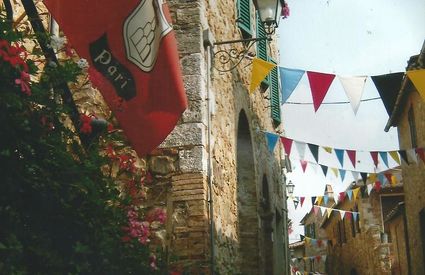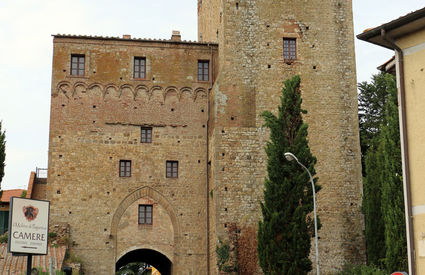Civitella Paganico
Middle earth where the water has marked the course of history
Here from the hot springs, frogs, stories, castles and tasty biscuits are born
Middle earth where the water has marked the course of history
Here from the hot springs, frogs, stories, castles and tasty biscuits are born
The legend of the miraculous image of Christ
A legend says that once whilst out hunting, a group of Paganico hunters discovered an image of Jesus Christ hidden in the shrubbery. The Civitellini, who were hunting in the same area, happened to find it as well. Both of the groups believed they had the right to keep the sacred image and decided to leave the decision up to divine will. They loaded the religious icon onto two cows and left the choice to them. Some say that the cows turned to Paganico without hesitation while some instead swear that they turned in the direction of Civitella. Others were sure that the will of God would express itself through his son. That night a snow storm covered the hills. When they went to church the next morning, the freezing Civitellini found that the altar where the Christ was meant to be was empty. They asked each other who could have stolen it. The snow made it easy enough to follow some footprints left behind. They realised, however, that there was a single trail that led from their church to the fortified Paganico village, the trail of a barefoot man who had taken down the cross, deciding to carry it by himself to his new home. The Paganico village, which in its name carried traces of its ancient pagan past, needed the miraculous cross to show that the fortress which the village was named after could be traced back to the ancient civilisation.
Charlemagne, the war and the soul, castles and abbeys
Charlemagne, proud of the valiant deeds of Ardengo in the early 9th century, granted his valiant champion full jurisdiction over this vast territory. That's how Civitella Marittima became the seat of the powerful Ardengheschi family. However, material goods are not everything. It was important to also think about the soul and so the powerful Ardengheschi built an abbey. The monks of Camaldoli - says Augusto Ricci - descended from Civitella and chose the green base of the valley alongside the noisy Lanzo, the ideal place for prayer and divine contemplation, as their home. The Civitellini learned to work the stones until they were smooth and polished and placed them one on top of the other in the Romanesque style.
Paganico, a French village at the entrance to the Maremma
The decline of the Ardengheschi coincided with the expansionist ambitions of the Republic of Siena, which in the 13th century, broke through to the sea and the Maremma, building the village of Paganico, a strategic outpost, fortified over the years, with a mighty wall to protect businesses from bandits and local noblemen. The inhabitants of Paganico were recruited with incentives: Siena ordered the creation of a free-village with tax privileges and concessions for those who decided to relocate. Traders and craftsmen who came from Siena were assigned the best lots, along the main road between the port of Siena and that of Grosseto, where the flow of people were concentrated and where it was possible to get the best deals.
The "Granocchia" river offering
Racing a frog on top of a cart is a party and an offering. The feast of Paganico and the Palio were born from the memory of medieval combats, an offering made close to the Ombrone River, in which joy was offered in return for clemency and friendship. This exchange between nature and community can be found in villages throughout the countryside. It’s a story of a love for the land and experience, excellence and flavours that you can only find here. The inhabitants of Paganico are nicknamed the "granocchiai", while those of Civitella are the "bucunti" and bucunto is a typical biscuit of the country tradition. Flour, eggs, sugar, lard, lemon and mint liqueur all flavour these fragrant baked rings.


